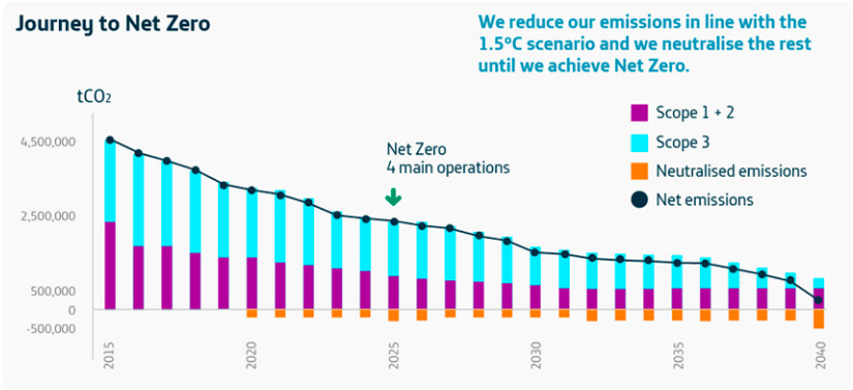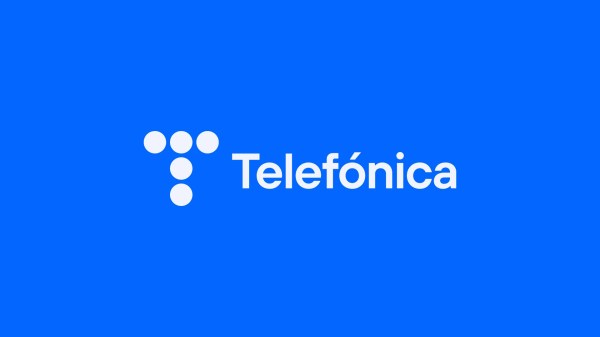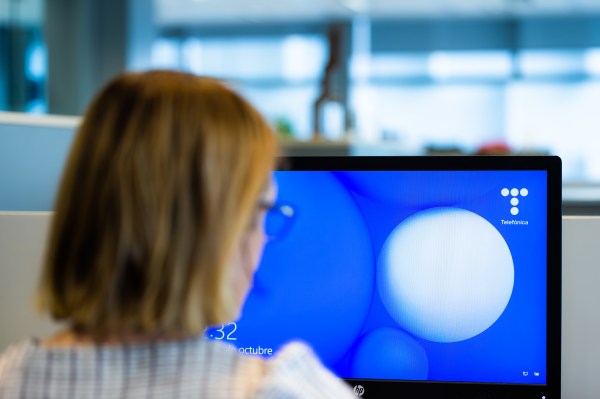When you think of Telefónica it probably won’t come to mind that we’re a company so committed to environmental issues. But we are. We’ve had energy efficiency initiatives in place for 16 years and early on we created our Climate Change Office to introduce the efforts of multiple areas into the company’s strategy. I remember our slogan at the time: “Changes to slow change”.
I humbly believe that we were able to see the risk of global warming but also the opportunities for a business such as ours. Digitisation forms part of the solution we require to decarbonise the economy.
The problem has become increasingly urgent and the involvement of multinationals increasingly necessary. This is why, in 2020, at the height of the pandemic, we sought to raise our ambitions with regard to our energy targets. Telefónica was prepared to commit to “Net Zero”. The Executive Committee approved our goal of registering net-zero emissions in our main operations by 2025 and by 2040 at the latest, including LatAm and the whole value chain. These are commitments that are aligned with the 1.5ºC scenario and validated by the Science-Based Targets initiative (SBTi).

Below we review how we’re going to achieve this “Net Zero” target, taking into account that our Scope 1 comes from fossil fuel consumption and refrigerant gas leakage. Scope 2 refers to emissions from the generation of the electrical energy we consume and Scope 3 to emissions from the value chain, ranging from purchases of goods and services to the use of products by our customers and business trips.
Step 1: Reduce our emissions
It’s essential to keep electricity consumption stable, despite the sharp increase in the digitisation of society, and to use renewable energy. In addition to continuing to improve our energy efficiency by transforming the network, making the most of the benefits of fibre and 5G, switching off the infrastructure we no longer use and using savings functions, we’ll soon set a carbon price to make investments and purchases that entail fewer CO2 emissions, increase leakage control and commit to technologies that don’t require the above and greener gases. The electricity we consume is now 100% renewable in Brazil, Spain, the United Kingdom, Germany and Peru and all the electricity we consume will be from clean sources by 2030 at the latest. We’re also contributing to additional renewable generation in the countries we operate in by means of long-term power purchases from renewable plants that are being built to supply our grids, the largest of which to date are in Brazil.
The above will enable us to reduce our emissions by 90% in Scopes 1+2 by 2025 in the main markets and by 70% in Latin America with respect to 2015. How are we doing? We’ve already cut our emissions by 61% in global terms.
Since 2015, we have managed to stabilise energy consumption, reducing it by 2.4% even though the traffic managed by our networks has increased more than 5.1 times
Step 2: Reduce emissions in the value chain
At Telefónica we’ve set ourselves the goal of reducing the emissions in our value chain (Scope 3) by 39% by 2025 with respect to 2016. In late 2021 the reduction stood at 27% and the emissions from our supply chain were the most relevant within this scope (56%). In the latter area we’re working with the most relevant suppliers in the Supplier Engagement Program to help them to set more ambitious CO2 reduction targets.
To address Scope 3, we’re also promoting eco-design in the devices we sell to our customers. The challenge is for them to consume less energy. A good example is the current router or HGU, which is 30% more efficient than previous models.
Step 3: Neutralise the remaining emissions
The emissions we’re unable to reduce (around 10%) will be offset by CO2 absorption projects, preferably nature-based ones that have the most reliable certificates, seeking to provide added value in the generation of employment and biodiversity.
Sustainable finance
Introducing environmental issues into the company’s strategy years ago is also enabling us to capitalise on the current demand for sustainable bonds to accelerate our energy transformation, a process key to step 1. In our first three issuances we’ve raised 2,500 million euros, with significant excess demand. Our green projects focus on replacing the copper network with fibre, which is 85% more energy-efficient.
In our sustainable financing framework, verified by Sustainalytics, we can identify five types of initiatives: the energy efficiency of the grid infrastructure, renewable energy, digital solutions for the environment, broadband deployment in disconnected areas and, finally, support for employment, entrepreneurship, educational initiatives and skills enhancement with a view to economic growth.
Transparency and commitment
Transparency is a priority on our path towards “Net Zero”, an element that has helped us to understand ourselves better and set more ambitious goals year after year.
Without the effort of measuring our progress and sharing it on a regular basis, we wouldn’t have got this far, we wouldn’t have managed to lead the Carbon Disclosure Project for seven years and we wouldn’t have been ready to follow the recommendations set out by the Task Force on Climate-Related Financial Disclosures (TCFD).
In terms of commitment, the reduction of CO2 emissions at Telefónica has formed part of the annual variable remuneration of all our employees for three years (a 5% weighting) and our objective of becoming “Net Zero” in 2025 in the main markets is one of the long-term non-financial objectives of the members of our Board of Directors (with a 10% weighting).
Because climate change requires the joint action of everyone; this is the story of how far we’ve come and where we’re heading.
#NetZero








